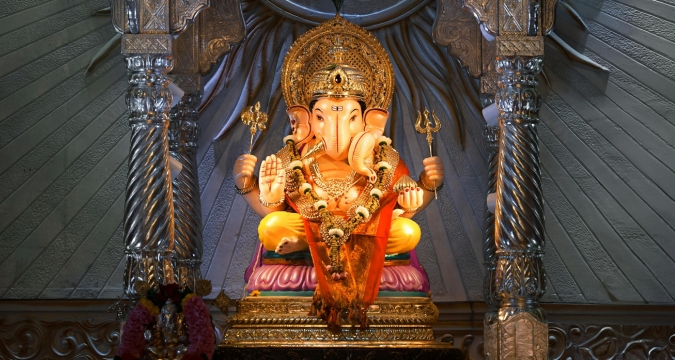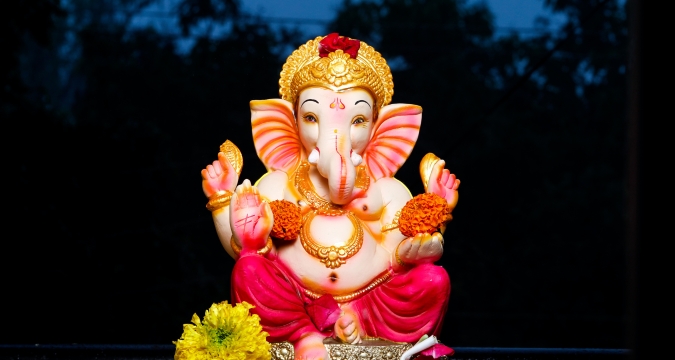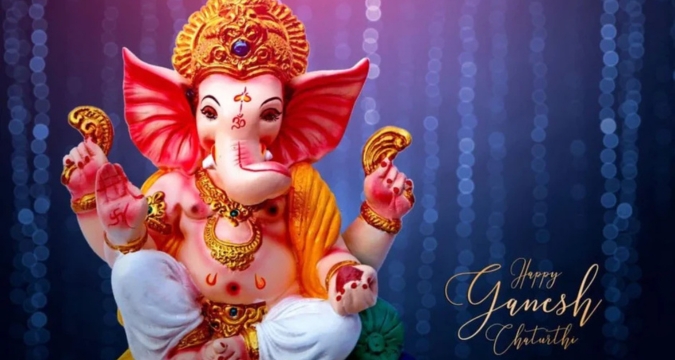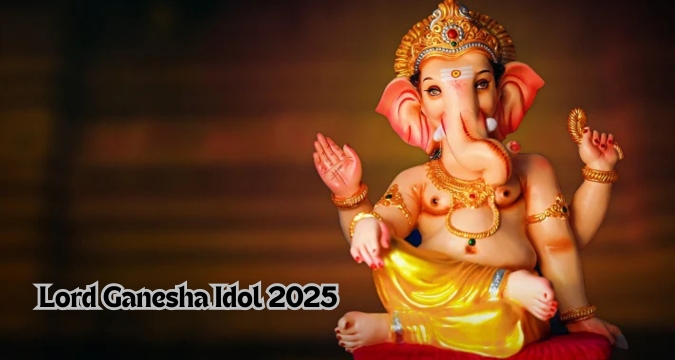Why Ganesh Chaturthi Matters
Millions of people celebrate Ganesh Chaturthi by uttering in their voices, Ganpati Bappa Morya!, in the streets of India every year. In 2025, the festival will not merely be a religion-focused event- it will be a cultural, social, and economic phenomenon that will overshadow daily news feeds, cause trending new affairs, and generate breaking headlines throughout the country.

Ganesh Chaturthi is not only a ritual. It tells the story of a union and collective dedication and also India can integrate tradition with the modern world. The festival is an embodiment of how ancient customs could be modified in a modern world where technology, sustainability and global interaction are rapidly becoming highly important.
Origins of Ganesh Chaturthi: From Scriptures to Society
The origins of Ganesh have been traced as far back as the Ancient Vedic texts and Puranic literature. Lord Ganesha is referred to as the son of Lord Shiva and Goddess Parvati and depicts intelligence, humility, and prosperity. His name and picture: elephant head, belly and broken tusk- has become universal with any-body of any age; when we say we have had our head in the sand, or there is no other side to the tusk, particularly to us old folks.
Nevertheless, the mass Ganesh Chaturthi began to be widely celebrated in 1893 when Lokmanya Bal Gangadhar Tilak turned a domestic family affair into a popular movement. During British colonial rule, crowds were discouraged. Tilak employed the occasion of Ganesh Chaturthi to draw people together, to develop social consciousness and to inspire patriotism.
This metamorphosis made the festival an annual cultural and political affair and created a foundation of the festival of much grander proportions.
Daily News Updates 2025: How India Is Celebrating
In 2025, Ganesh Chaturthi will be the top news of the country. Every region is also incorporating its own culture into celebrations.
Maharashtra – The Heart of Ganesh Utsav
Mumbai is the epicenter with iconic pavilions like Lalbaugcha Raja, Ganesh Galli, and GSB Seva Mandal drawing in tens of thousands of visitors. News reports coming out of the city indicate queues of kilometers-long with darshan being extended late into the night. The GSB Seva Mandal as usual with its pure gold decorated deity, is making a buzz on social media with its opulence.

Karnataka and Andhra Pradesh – A Cultural mix
Much of the pollution is caused by eco unfriendly idols made of plastic and finally resorting to using nature conserving idols made with clay and red mud. Hyderabad is marrying faith zeal with technical savvy, including QR-code donations and live tracking of processions to the visarjan.
The regional traditions are Goa, Gujarat, and Tamil Nadu.
Idols in Goa are usually made using shadu clay (river clay), whereas Ganesha is worshipped in Tamil Nadu in a local way, using kozhukattai (sweet dumplings that look like modak). The Surat and Ahmedabad cities of Gujarat and cards manufactured in their temples record high sales etc. this year and the artisans are working day and night.
Throughout the World- Question:1026850
The Indian diaspora has internationalized Ganesh Chaturthi to a global event In New Jersey and Dubai, big-time communal activities are hitting the news. In London the festival was celebrated in Trafalgar Square with cultural performances, and in Australia, the local councils allowed grand procession there, the first of their kind.
Trending News Updates: The Eco-Friendly Revolution
Among the most active trends of 2025 is the drive towards green celebrations. The environmental hazard was the immersion of PoP idols in rivers and seas, which resulted in damage to the environment. This time the government has intensified the action on PoP idols with workshops being closely supervised.

The rise of Environmentally Friendly Sales: There has been a report that 60 percent of idols sold in 2025 were clay based, compared to only 35 percent ten years earlier.
Artificial Immersion Tanks: Large numbers of fake ponds (more than 200) were installed by the Municipal Corporation of Mumbai and Pune to ease water pollution.
Plantable Idols: 2025 and a new technological development are plantable idols- idols with plants embedded in them. These idols become plants after visarjan at home and the process symbolizes continuity and rebirth.
This environmental awareness is hitting the news demonstrating how religiousness and sustainability can go together.
Breaking News Headlines: Tech Meets Tradition
It has also got the digital age in Ganesh Chaturthi In 2025, technology is transforming the way people celebrate.
- Via the Darshan: Larger pandals have resorted to streaming 24/7 on YouTube, Instagram, and Facebook, where the devotees anywhere in the world can seek blessings.
- AI and Drone Security: Cities such as Pune are introducing AI-based systems to control crowds using artificial intelligence and drone security.
- Mobile Apps: Apps that are officially supported now offer aarti timings, alerts on traffic, immersion routes and cashless donations could also be made.
These tech-enhanced traditions are not just news in India but also elsewhere in the world as festivals are taking a revolutionary turn towards fulfilling contemporary needs.
The Economic Impact of Ganesh Chaturthi
Besides being a festival of devotion, it is also a boost to India economically. It creates thousands of jobs, whether it be the idol-makers, sweet vendors, florists and the people who organize the event.
- Ultimate Economy: Experts reckon that Ganesh Chaturthi 2025 has created an economy worth over 22,000 crore.
- Employment: Arrangement of idols in Maharashtra, West Bengal and Tamil Nadu provides employment to thousands of artisans.
- Business Pump: The influx of domestic and foreign tourists in cities like Mumbai and Pune to watch the procession of visarjan pumps businesses including hotels and transport.
This economic ripple effect also causes Ganesh Chaturthi not to be only a spiritual celebration but also a festive financial festival of India.
Challenges and Concerns
As the festivals are on the rise, issues still arise.
- Pollution: PoP idols are used illegally even after the eco-friendly campaigns. Visarjan breeds chemical contamination of the water bodies as gathered in news reports.
- Traffic and Congestions: Mumbai, Hyderabad, and Bengaluru have been experiencing severe traffic jams, and the issue of managing the crowds is a consistent problem.
- Commercialization: Critics contend that the festival is rapidly turning out to be a sponsorship-seeking competition in pandals, so it is losing its spiritual touch.
The Spiritual and Cultural Essence
Besides the breaking news and economic data, Ganesh Chaturthi is a very spiritual event. Lord Ganesha is the representation of wisdom, humility as well as new beginnings. The festival educates people to get rid of negativity in their lives and instead move towards positivity.

The rituals of preparing and eating modaks, reciting mantras, and these all evening aartis build the familial ties and establish a communal feeling of joy. Retaining such spirituality, this essence is still appealing to millions even in 2025 despite modernity.
Global Recognition of Indian Culture
The global celebration of Ganesh Chaturthi is a testament to India’s cultural soft power. International media now covers the festival as part of world news updates, showcasing India’s traditions to a global audience. Universities abroad organize lectures on its socio-political history, while cultural groups host exhibitions of Ganesh idols in various artistic forms.
This rising global interest indicates how Indian festivals are shaping international cultural diplomacy.
Ganesh Chaturthi as a Reflection of Modern India
Ganesh Chaturthi 2025 is located at the intersection of continuity and progress. It is a spiritual pilgrimage, a social reunification, economic boost and a world cultural exhibition.
Whether readers get their news updates daily, read latest news updates, trending news updates, breaking news headlines or all of the above, this festival is a collection that goes beyond stories: this is an exploration on how India is celebrating its identity and also coming in terms with the modern demands.
When the crowds scream out, “Ganpati Bappa Morya!” sounded once again, the festival teaches us that much more than pomp, devotion penetrates deep into the undertones of being small and mighty in using the power of community to sustain us.








